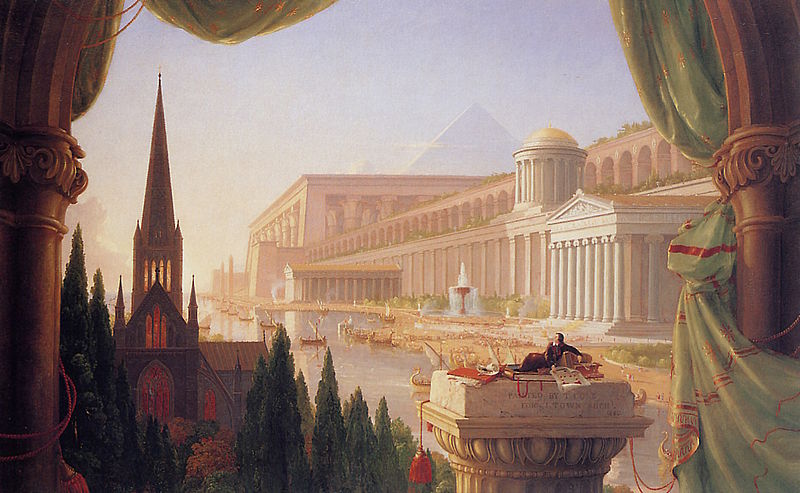How Successful Megaprojects Are Games of Innovation
This is one of our free-to-access content pieces. To gain access to all Ideas for Leaders content please Log In Here or if you are not already a Subscriber then Subscribe Here.

Megaprojects are not so much linear constructions of grand designs, but more a ‘game’ of innovation between players slowly ‘shaping,’ through a series of episodes, the project over time.
Megaprojects are large, technically complex, multi-year, billion-dollar (or more) engineering and financial ventures that somehow overcome challenges, turbulence, risk and resistance to eventually meet the needs for which they are built.
To better understand the success factors of megaprojects, it is more useful to think of them as games of innovation, rather than the linear, step-by-step engineering process perspective with which they are usually viewed. This is the argument advanced in a recent MIT Sloan white paper and upcoming book chapter by the research team of Roger Miller from France’s École EMD, Donald Lessard from MIT, and Vivek Sakhrani, also from MIT.
A ‘game’ involves a group of actors who interact among themselves as they pursue a goal. Through their interactions, the group moves inexorably towards closure. This ‘game’ process more accurately reflects the ongoing, multi-actor, multi-responsibility process of megaprojects.
According to the researchers, megaprojects are shaped over time through the ongoing interactions between two types of actors. The first is the sponsor, who has a problem to resolve and is the driver behind the project. The second type of actor is the large group of expert firms who form a coalition that works to design and build the project. This ‘duo’ of actors, to use the researchers’ term, often becomes a trio when stakeholders resisting the project join the process.
The shaping process occurs as the duos face and deal with a continuous series of issues and challenges. According to the researchers, the ongoing shaping of the project takes place through a series of ‘episodes,’ each episode dealing with an issue or a bundle of issues that need to be resolved to keep the project moving forward. Within each episode, solutions to the issue(s) are developed, investments are made to gain momentum, resistance is met and overcome through rational arguments and diplomacy, and eventually some closure is achieved on the issue or issues. (Note that issues may resurface, but for now, the project moves forward).
The researchers describe a series of six general episodes or sets of episodes that move the megaproject from concept to completion:
If the megaproject is a game, the prize of the game is value. Throughout the episodes described above, both sponsors and experts are pursuing their definitions of value (e.g. service levels and service quality for sponsors, reputation and learning for experts) and value capture (e.g. rights and privileges for the sponsor, profits for the experts). Trade-offs in value and value capture emerge throughout the process (for example, sponsors may incur greater costs to fulfill environmental requirements.)
Megaprojects are complex. Successfully completing a megaproject — in other terms, defining and capturing the ultimately desired value from the project — requires mastering this complexity. The iterative, give-and-take shaping process offers a path to mastering this complexity. It won’t be easy.
To succeed, sponsors and experts must embrace complexity. Be proactive and make conscious choices on how to address the inevitable complexity. For example, recognizing the potential for resistance, engage stakeholders early in the process — not after major investments have been made.
Identify the mechanisms required to instill governance in the megaproject. In the example above, how do you engage stakeholders early in the process? The Orlyval project in Paris did not have such mechanisms, and the project advanced without stakeholder involvement. The result: a project that was less complex to build (no need to pay attention to resistors) but turned out to be a white elephant.
Keep value trade-offs alive. The best-laid plans, to paraphrase the old saying, never quite materialize as expected. As the project evolves through the episodes, sponsors and experts must continue to balance trade-offs among costs, profit, safety, environmental impact and other elements of the ultimate value of the project.
Grand designs are the stuff of artists’ renderings. Sponsors, experts and stakeholders must recognize that any megaproject will be shaped in a multitude of unforeseen ways before those renderings become reality.

Ideas for Leaders is a free-to-access site. If you enjoy our content and find it valuable, please consider subscribing to our Developing Leaders Quarterly publication, this presents academic, business and consultant perspectives on leadership issues in a beautifully produced, small volume delivered to your desk four times a year.

For the less than the price of a coffee a week you can read over 650 summaries of research that cost universities over $1 billion to produce.
Use our Ideas to:
Speak to us on how else you can leverage this content to benefit your organization. info@ideasforleaders.com